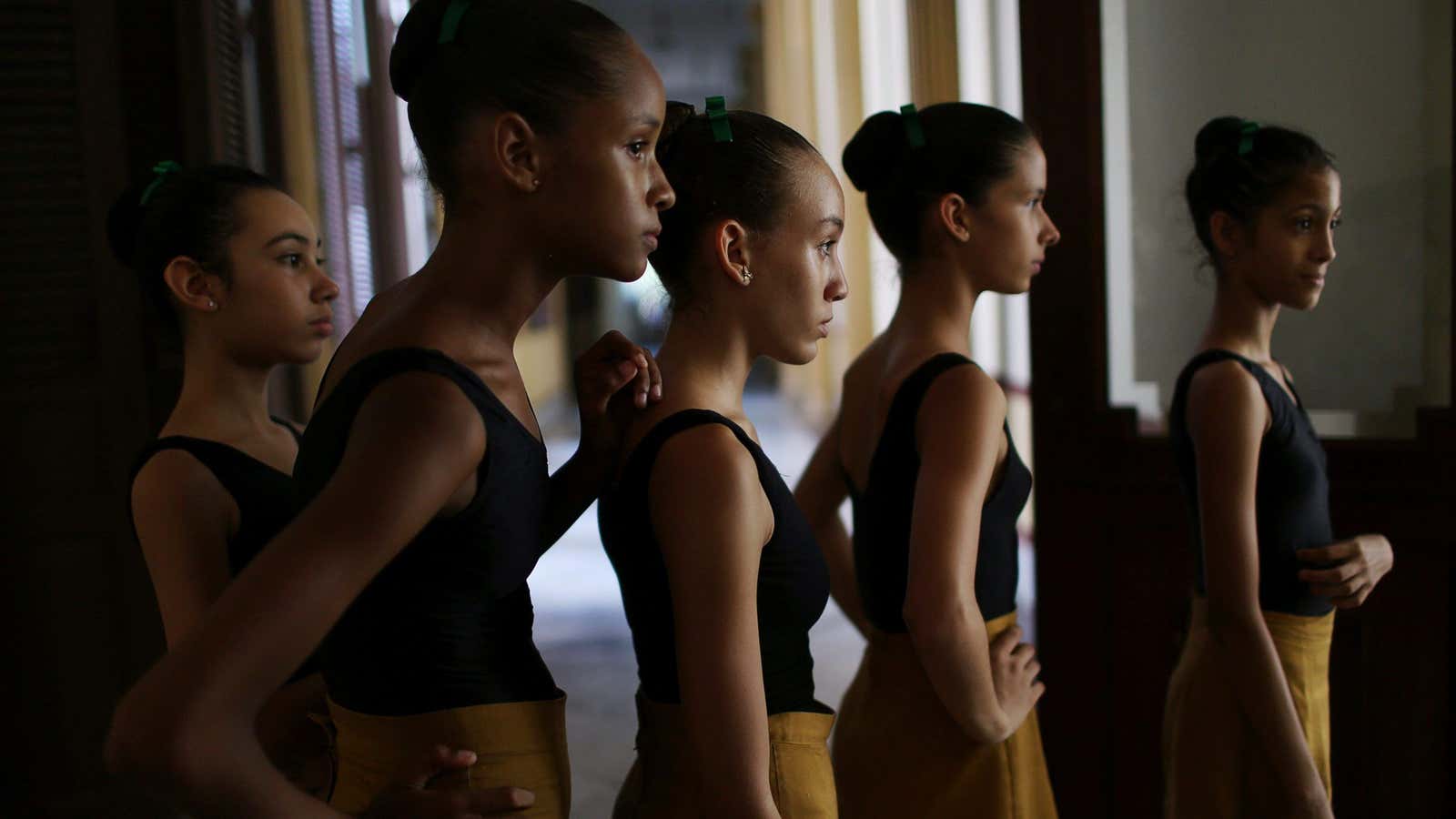When adults feel stressed out, they might pour themselves a glass of wine or smoke a cigarette, or maybe do some yoga. But a new report shows that British teenagers who are under pressure often turn to self-harm, with girls more than twice as likely as boys to say they intentionally hurt themselves in the past year.
According to the survey from the Children’s Society, which included nearly 11,000 children in the UK, 22% of 14-year-old girls reported harming themselves last year, and almost one in 10 boys of the same age reported doing the same. Almost half of kids who reported being attracted to people of the same or both genders said they had hurt themselves in the past year, suggesting very high levels of distress.
The researchers say that the primary causes behind the high rates of self-harm include concerns about appearance, gender expectations, and even austerity. “Worries about how they look are a big issue, especially for girls, but this report shows other factors such as how they feel about their sexuality and gender stereotypes may be linked to their unhappiness,” said Matthew Reed, chief executive of The Children’s Society.
National Health Service (NHS) data released this month showed that the number of girls age 18 and under admitted to the hospital for self-harm almost doubled in two decades—from 7,327 in 1997 to 13,463 in 2017. During the same time period, the number of admissions for boys increased from 2,236 in 1997 to 2,332 in 2017. Anorexia among younger children is also on the rise.
Natasha Devon, a prominent mental-health advocate in Britain, was not surprised by the figures. She told the Guardian, “[M]ost people say they started doing it as it felt good. They did it in response to not feeling heard or not being able to articulate what was wrong. Over time it is addictive.”
Stories from children who had self-harmed confirm these views. Jessica, 13, told the Guardian that cutting herself and other forms of self-harm helped her cope with the pressure to be perfect: “I would feel euphoric afterwards. I found physical pain easier to control than what was going on in my mind. The moments I felt pain were the moments my thoughts stopped and all I focused on was the physical discomfort.”
Devon says economic problems and school pressure have played a significant role too, noting that there has been a sharp rise in reported mental-health conditions since 2010, when austerity started.
The data come from the 2018 Good Childhood Report, published by the Children’s Society, which examines the state of children’s well-being. It includes data from the Millenium Cohort Study which follows more than 11,000 children born in the UK in 2000-01.
It also includes a survey of children aged 10-17 and their parents across 2,000 households. That survey found that the issues of most concern to children were school and their appearance. Nearly a quarter of kids said (24%) they heard jokes or comments about other people’s bodies or looks ‘all of the time,’ while 22% in secondary school (11-18) said jokes or comments were often made about people’s sexual activity. “Both made girls feel much worse about their appearance and less happy with their life as a whole, but this pattern did not apply to boys,” the report said.
Happiness with family relationships had the biggest positive influence on children’s overall well-being. But schools also play a major role, with the Society calling for counselors in every school and imploring the government to fund the £2 billion shortfall facing local children’s services by 2020.
Reed, in his introduction, noted some disturbing trends, including the fact that children’s happiness with their lives rose steadily from 1995 to 2010, but has since reversed and now as low as it was 20 years ago.
